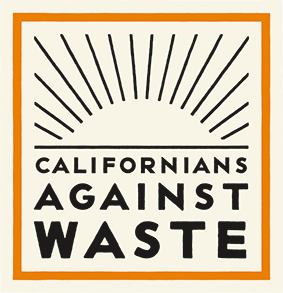California Recycling Levels Fall Below 50% for First Time in Years
FOR IMMEDIATE RELEASE
June 24, 2016
Contact: Mark Murray, (916) 443-5422
SACRAMENTO, CA — California’s overall recycling rate fell to 47 percent in 2015, below the 50 percent or better rates achieved since 2010, and far short of the 75 percent goal set by the legislature for 2020.
The newly-released data from California Department of Resources Recycling and Recovery (CalRecycle) shows that disposal amounts increased by 2 million tons in 2015 compared to 2014, resulting in more waste, higher costs and an additional 200,000 tons of direct greenhouse gas emissions.
“At a time when Governor Brown and State Policy Makers are receiving deserved recognition for the adoption of many Nation-leading policies to reduce pollution and protect the environment, the downturn in the State’s recycling efforts stands out as an embarrassing blemish,” said Mark Murray, Executive Director for Californians Against Waste.
Contributing to the recycling drop are low commodity prices, closed recycling centers and cheap disposal alternatives. The low commodity prices for paper, plastics and metals are driven by low oil prices, which in turn makes processing and producing virgin materials from natural resources appear to be cheaper.
Low commodity prices have resulted in the closure of more than 662 recycling centers in California over the last 12 months, with potentially hundreds more closing after July 1, unless urgency legislation is enacted to restore recycler reimbursements to 2015 levels.
In addition to low commodity prices, recyclers and composter must also compete with artificially low priced disposal options that fail to incorporate their true environmental and regulatory costs.
While new policies have been adopted in an effort to increase recycling (including requirements for businesses to recycle and compost), sporadic enforcement, under investment and slow implementation have undermined program effectiveness and failed to offset increased consumer consumption of disposables.
“It’s been more than a quarter century since California policy makers committed to cutting waste disposal in half, and for most of that period consumer support, manufacturer responsibility, and targeted investment all contributed to achieve 50 percent or better recycling levels,” said Murray.
“But increased fracking and continued taxpayer subsidies for non-renewables and cheap disposal have created and uneven playing field for market-based recycling and composting efforts,” said Murray.
“California’s recycling future is at a crossroads. Greater attention and investment, and updated regulatory scheme is needed to ensure that the California does not backslide on the great environmental and economic strides that have been made to conserve and recycle finite resources.
“It is time for Governor Brown and the legislature to come together to develop a framework that puts California back on the path to sustainable materials management. We have over a quarter century of experience to help us identify which policies and programs have proven successful in the past and should be replicated or expanded.
“We need to ensure that that the economic incentives and regulatory requirements support the growth of recycling, composting, and recycled material-based manufacturing or suffer the consequences increased disposal and taxpayer costs, and a degraded environment.”
###
Californians Against Waste is a non-profit organization dedicated to conserving resources, preventing pollution and protecting the environment through the development, promotion and implementation of waste reduction and recycling policies and programs.

